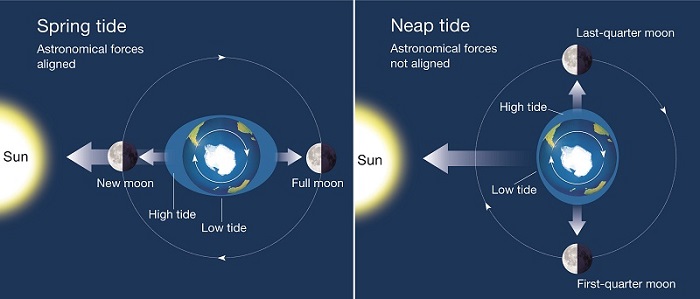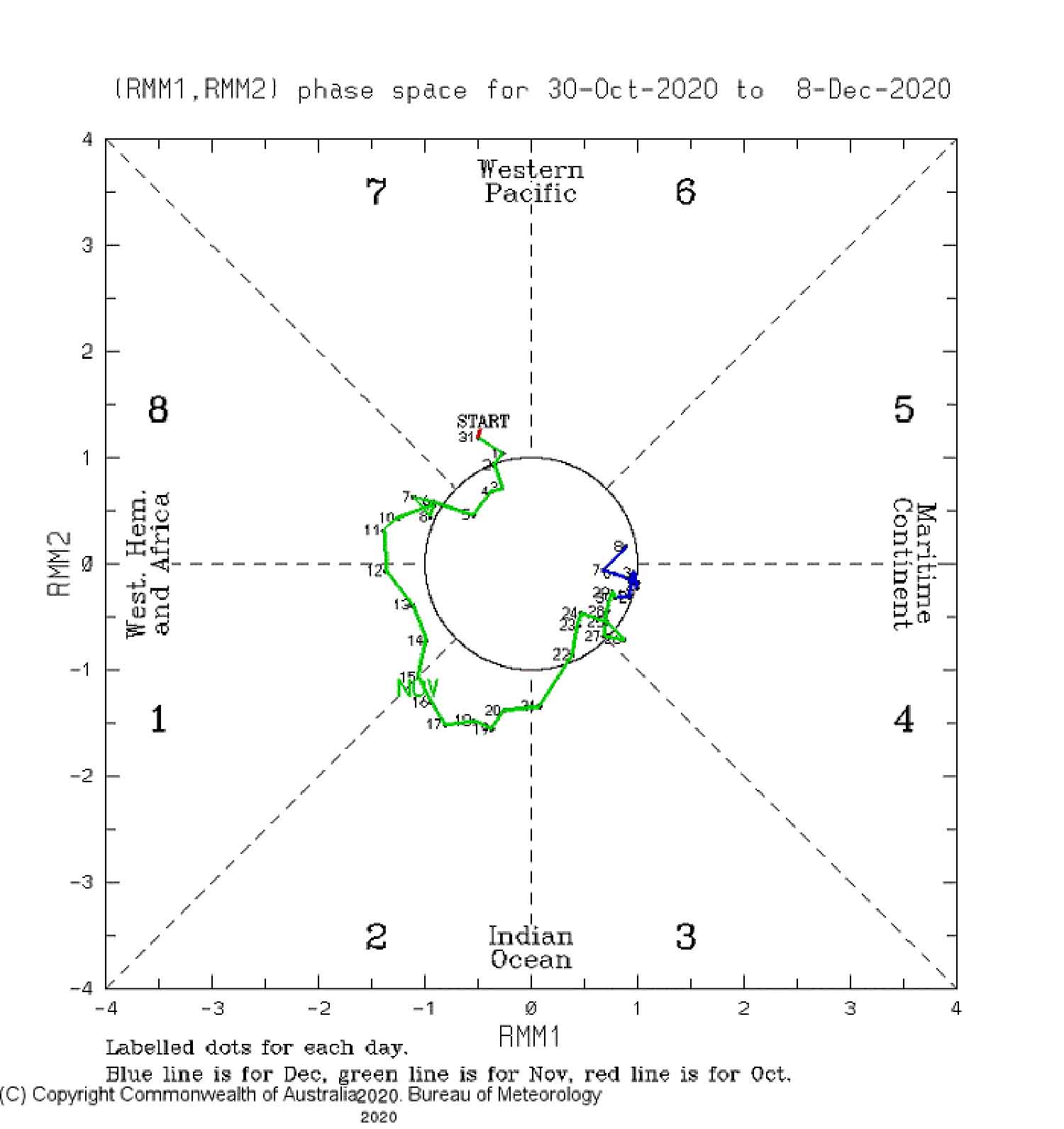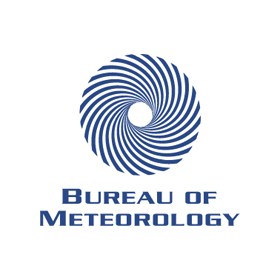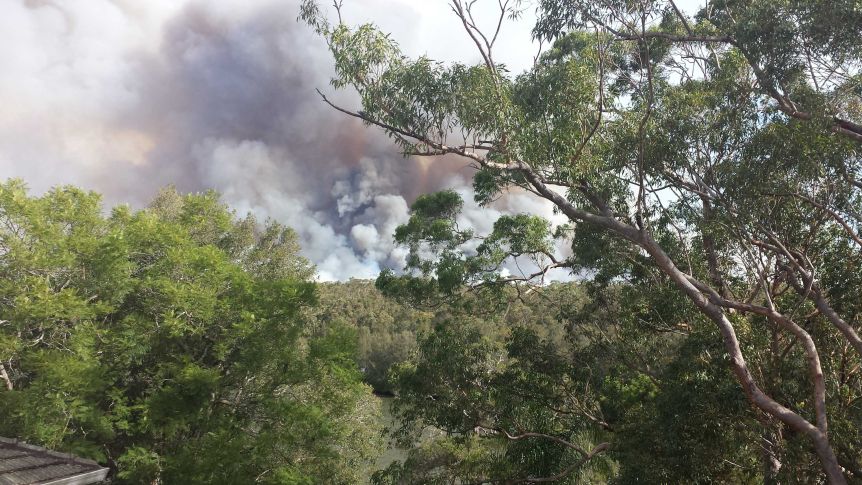what exactly is a king tide ?
The term king tide has been used in high rotation as the east coast has experienced wild weather and battering waves over the past but it is not technically a scientific term.
“King tide” is a term widely used to describe particularly high tides but it is not a technical scientific definition
Spring and neap tides are the terms for highest and lowest tides of the month as dictated by the rotation of the Sun, Moon and Earth
Weather and climate factors can push tides to well beyond what they would have been if purely dictated by astronomical effects
The tides are governed by a delicate play between the movement of the Sun, Earth and Moon as well as local weather, currents, climate and waves.
No matter what they are called, there has been a fair bit at play behind the damaging waves over the past few days.
What is a ‘king tide’?
The term “king tide” is generally used whenever the tides are uncommonly high.
But Ron Hoeke, research team leader at the CSIRO’s Climate Science Centre’s sea level, waves and coastal extremes team is not an advocate of the term.
“Ah, king tides. It’s a very commonly used moniker which I really dislike because it really doesn’t have a scientific definition,” Dr Hoeke said.
Sometimes “king tide” is used to describe the most extreme astronomical tides of the year.
But that is not the case at the moment. The next king tide by this definition is not expected until January.
“While technically we’re not at a king tide because those two forces aren’t aligned, we are seeing tides that are bigger than what we would normally expect in a king tide,” explained Maritime Safety Queensland’s general manager, Angus Mitchell.
What are the astronomical tides?
The astronomical tides are a result of the gravitational forces of the Moon and the Sun pulling on the Earth.
As Mr Mitchell explained, it goes back to Newton and a bit of basic physics.
“It’s simply the gravity and the mass of the Moon being so close to Earth will pull things towards it, and the thing that’s the most fluid is the ocean and the sea,” he said.
The Sun also pulls on the oceans but as it is further away, it’s effect is less despite it being bigger than the Moon.
This tug-of-war results in the predictable ebb and flow of our astronomical tides.
High astronomical tides occur when the Moon and the Sun pull in the same direction, causing what is called a spring tide.
Spring tides occur twice in the lunar cycle — at the new and full moon — and result in the biggest range of tide, with both high high tides and low low tides.
 When the Sun and Moon are aligned it results in extreme high and low tides. Whereas when the moon is at 90 degrees to the sun, it leads to more even tides.(Supplied: Bureau of Meteorology)
When the Sun and Moon are aligned it results in extreme high and low tides. Whereas when the moon is at 90 degrees to the sun, it leads to more even tides.(Supplied: Bureau of Meteorology)However, when the Sun and Moon are at 90 degrees to one another, they counter each other’s pull and create what is known as neap tides.
At the neap tide, there is very little variation between high and low tides.
The astronomical tides are further complicated by the fact that neither of these orbits is a perfect circle.
The Moon’s pull is greater when it is at its closest point to the Earth (perigee) and least when it is furthest from the Earth (apogee).
Likewise, the Sun’s pull is strongest when it is close to the Earth (perihelion) and weaker when it is furthest away (aphelion).
These may be a complicated series of factors, but the astronomical tides are actually very predictable and easy to forecast, according to Mr Mitchell.
We know exactly where the Earth is going to be relative to the Sun, and we know exactly where the Moon is relative to the Earth,” he said.
“What we can’t predict is the weather conditions at the time.”
What else affects the tides?
The past few days have been an excellent example of the weather wreaking havoc on the tides.
According to Mr Mitchell, low atmospheric pressure as a result of a deep trough sitting off the coast and the onshore winds have resulted in the high tides.
“That wind is pushing onshore and is also creating tides that are about 30 centimetres in some points above what we would have predicted for this time of year,” he said.
Then there are longer-term factors that also affect the tides.
For example, both La Niña and a strong pulse of the East Australian Current and can lead to higher water levels, especially when combined with spring tides, according to Dr Hoeke.
“Of course those two things aren’t completely independent of each other. The East Australian Current tends to be stronger during a La Niña anyway,” he said.
“All those things are combining along with the background of sea-level rise associated with climate change, that’s making it all a little bit higher,” according to Dr Hoeke.
The question remains, however, should the resulting water height from all of these additional factors on top of the astronomical tides really be considered a “tide”.
According to Dr Hoeke, in coastal hazards research, they often use the term “total water level” instead of “tide”.
So it is more correct to say that, ‘Over the last few days we have been experiencing a high total water level as a result of weather and climate factors compounding a spring tide’,” he said.
Although there is no denying “king tide” does have a ring to it.



